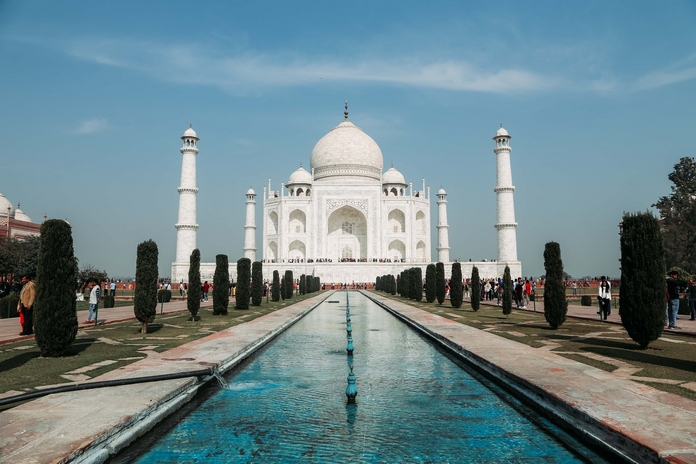I’m sure that if I asked you to label pictures of famous monumental landmarks in the world, you’d be able to do it. This is because most of us know what the most famous monuments and landmarks of different countries look like. countries look like. We grew up seeing them in pictures or may even have had the opportunity to see them in person. Now, if I asked you to narrate the stories that led to their existence, how many of us would be able to narrate even one? I know for sure, that I would struggle. Growing up, I heard many rumors behind the Taj Mahal and some of them seemed preposterous. So, to dispel any ambiguities, I took to the internet! This led to an increasing interest in the origins of other famous structures, so here I am now, writing about some of the most interesting stories behind landmark structures of the world.
Taj mahal
Obviously, this series will start with the landmark that helped me embark on this journey into the past, the Taj Mahal. Being a native Hindi speaker, the Taj Mahal can literally be translated into the “crown palace”. This structure is made entirely of white marble and is the perfect example of architectural symmetry. Just by looking at it from the front view, even the trees and greenery align symmetrically. The Taj Mahal has a very rich history and reflects the blend of many cultures in olden day India. Located in Agra, India, the Taj Mahal was built in between 1631 and 1648 under the order of the Mughal emperor Shah Jahan. Shah Jahan built this entire monument as a tomb for his favorite late wife, Mumtaz Mahal, who passed away during childbirth (of their 14th child)! Talk about a romantic gesture, it would be hard to beat that today! Many people might know this part of the story, but the story told a lot by Indian parents is that Shan Jahan cut the hands of the workers who built the palace, to ensure that nothing similar could be built in the future. This idea is just what it seems, impossible and untrue. It is a myth that has long been told, and is still being told (to naïve and gullible children).
To add to the romantic story, few accounts have been narrated which show Shah Jahan’s extreme affection towards his wife. Shah Jahan, in the year 1631, was travelling for battle and was accompanied by his very pregnant wife, Mumtaz. Mumtaz soon delivered a daughter, but her condition got worse. Upon hearing about his wife’s condition, Shah Jahan went to accompany her and Mumtaz passed away in the arms of her husband. She was buried immediately near the camp they were staying at, but only temporarily. It is said that Shah Jahan was so distraught by the death of his wife that he didn’t leave his tent for 8 continuous days! Upon leaving his tent, people remarked that he had aged tremendously. After winning the battle that he had set out for, Shah Jahan requested that his wife be dug up and carried back to Agra, where he lived. His late wife was carried into Agra with multiple soldiers carrying her and leading the way, and multiple people watching. To dispel his grief, Shah Jahan directed it towards planning to build a mausoleum for his wife, one which would put all others to shame! This thought was very noble of Shah Jahan, not only because of the grand scale of the project, but largely because it would be the first time a mausoleum would be dedicated to a women! Shah Jahan was a feminist in 17th century India, a sight which is difficult to see nowadays!
Another important aspect of the history of the Taj Mahal is the architect and cultural influence on the design of the building. It was heavily inspired by Islamic practices and houses a mosque as well as a lot of Islamic calligraphy. The chief architect who built designed the palace is Ustad Aḥmad Lahawrī, a Persian of Indian descent. The team of workers who built the palace were all of Indian, Persian, European, and Ottoman descent. A multicultural team of workers, a religious inspiration, and the intention to dedicate the structure to his lover, the history of the Taj Mahal reflects a beautiful symbol of love.


